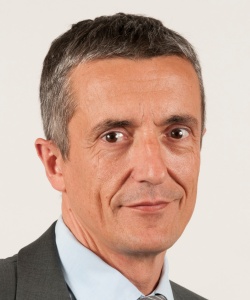EU
More equality in healthcare
The European Commission has an ambition to create more equitable, cost-effective and available healthcare throughout its member states. Here is a report on preliminary findings from the EU funded initiative striving for greater equality in healthcare systems across Europe.

Dr François Meyer, International Advisor to the French Haut Autorité de Santé (HAS) presented results from one EU initiative, collaboration between HTA agencies (EUnetHTA), set up to help achieve these aims at a recent meeting organised by MAPI, a service provider to the global healthcare industry.
Health technology assessment is a multi-disciplinary field of policy analysis that studies the medical, social, ethical and economic implications of development, diffusion and use of health technology. It bridges the gap between the world of research and the world of decision-making.
In terms of Europe today, healthcare systems are financed and organised at the national level with interventions evaluated by national HTA bodies using criteria, procedures and rules that are defined at that national level. This means that across member states there are differences in HTAs’ processes; the only common obligations being to take decisions based on objective and verifiable criteria and the respect of timeframes e.g. 90 or 180 days for a new drug. This means that, in Europe, there are country specific differences in access to health technologies complicating cross-border healthcare.
In fact, two major models are used in Europe. One, used in countries such as France, is based on determination of added clinical benefit, which then leads to price negotiation and a final decision. In other countries, such as the UK, a health economics analysis using the price proposed by a company is instigated and then the decision is based on the calculation of the estimated cost/QALY and this is then compared to the threshold acceptable for the country’s policy makers.
The licensing of drugs is already carried out at a pan-European level by the EMA, so why not go further and have a centralised approach to HTA? The EUnetHTA Joint Action 2 Grant Agreement has been in place since 1 October 2012 and is scheduled to run for three years.
Thirty-seven partners in 26 EU Member States are involved in the project, which focuses on strengthening the practical application of tools and approaches to cross-border HTA collaboration to establish a sustainable structure for HTA work in the EU.
To convert this into reality and ensure that all European citizens have best possible healthcare now and in the future, with resources allocated according to need rather than economic climate, two types of collaborative action have been attempted. As Dr Meyer explained during his presentation, the first is to cooperate on HTA production. Its aims are to avoid duplication of work (e.g. between 2005 and 2008, seven HTA reports on drug eluting stents were produced) and increase consistency and transparency.
To achieve these, joint assessment reports of core HTA information have been created, as have templates for companies to submit data and methodological guidelines for HTA bodies to follow. A concrete example of this collaboration is the methodological guidelines put in place for the assessment of the relative effectiveness of a new drug. In this case nine guidelines have been put in place to be followed by HTA bodies when assessing a drug. They cover the choice of end points, comparators and comparisons and levels of evidence.
The second type of collaboration is a project to improve the quality of data produced in primary research. The objectives of this initiative are to improve the development plans of new technologies and the additional data collection (to reduce uncertainty after initial assessment). The tools put in place to help obtain these are ‘early dialogues’, disease specific guidelines and a definition of common core protocols for the collection of additional data.
An on-going example is the development of disease specific guidelines for osteoarthritis; the draft document will be available for public consultation later this year (Q4).
Early dialogues are an initiative whereby the company presents its development plan and ask questions to HTA bodies to check whether the choices made are appropriate (e.g. the choice of comparator, endpoint, population and so forth).
The completely confidential meetings are funded under the umbrella of EUnetHTA and another European initiative, SEED (Shaping European Early Dialogues) which is coordinated by the HAS, France. These meetings are attended by between to five to 12 different HTA agencies with the EMA invited as observer. To date, 14 different projects for new drugs have undergone early dialogue with great success in improved efficiency and six more projects are about to enter the process.
Despite the apparent advances from this EU sponsored model many questions remain unanswered. How will the European cooperation on HTA be financed in the long term? Will there be a fee for service for some activities? How will HTA bodies work together in the future? Which HTA bodies will participate? What will be the priorities of the permanent HTA network? How will national HTA bodies used the joint work for the production of their national HTA reports?This October, these vital questions were addressed and debated at the HTA 2.0 Europe conference in Rome.
Details:
03.01.2015


